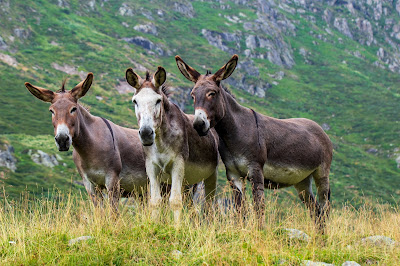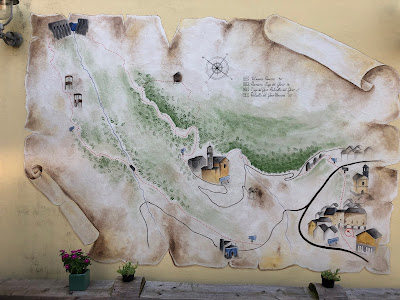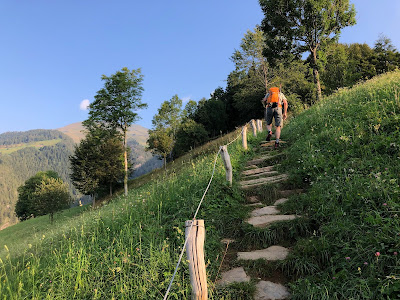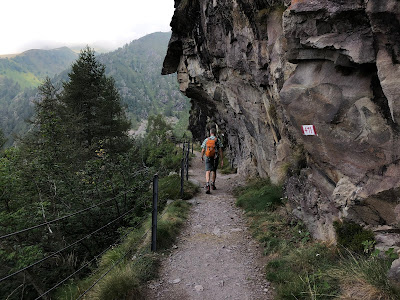The Argument
In the Italian language, nouns can derive from verbs. Verbs can derive from nouns. Also, nouns can derive from adjectives and vice-versa, and much more. It’s a circus of possible conversions. But in this circus, we’d like to call out one specific category because it’s a place we trip up a lot, and that category contains nouns that resemble the first or third-person singular conjugation of a related verb in present indicative.
We say “related” verb because we aren't sure if the verb came first or the noun. When looking up these nouns in WordReference, the related verb is indicated, but the true etymology is not clear. Spot checking a few noun/verb combinations using Treccani definitions reveals that it's not a simple as saying these nouns derive from the related verbs as it could easily be the other way around, case in point: pranzare from pranzo. The derivations of the words are complicated and better left to linguists. That said, the main point of this post remains valid: there can be confusion between a noun and its related verb, and in particular knowing the gender of the noun.
In the list below, you’ll notice that all the verbs are -ARE verbs. The noun is formed by removing the -ARE and adding the letter O or A. Verbs ending in -ERE and -IRE and their related nouns derive from the past participle usually. For example, la discesa from discendere and la promessa from promettere. We are not talking about these nouns here; we are concerned only with the -ARE verbs.
In English, do we have nouns derived from verbs? Yes we do, and they are called verbal nouns, and they are mostly related to gerunds. There are also nouns created by adding to verbs. See for example, Forming Agent Nouns from Verbs. But these cases in English are not like the Italian cases discussed here where we remove part of verb root and add the letter O or A to form a noun that looks like a conjugation.
From the Treccani reference on conversion, we can get a clue to how to resolve to problem of the ending and knowing if it is O or A. The reference says (paraphrasing) that the major part of the nouns derived from verbs are masculine (end in O). And furthermore, they are usually action verbs and end in -ARE. Many them are verbs ending in -EGGIARE. Here’s the text from the reference:
Of course, we wondered what percentage are masculine. What are our odds of being correct if we guess masculine? To find out, we created a list and counted. The list is composed of words that we encounter daily, so it isn’t in necessarily in any particular order. It would be useful to try find the most frequently used nouns in this category (-ARE verbs with related noun), but we did not do that here.
“A partire da verbi si formano principalmente nomi. La conversione è segnalata da un cambio di classe flessiva (es. arrivare -> arrivo, parcheggiare -> parcheggio, ricoverare -> ricovero). Il maggior numero di nomi è costituito da maschili in -o, i quali di norma sono nomi di azione (-> azione, nomi di) e le regolari estensioni semantiche tipiche di questa classe (risultato dell’azione: disegno, taglio; strumento: cambio; luogo: incrocio). I verbi appartengono quasi esclusivamente alla coniugazione in -are; fra quelli derivati prevalgono quelli con il suffisso -eggiare (conteggiare -> conteggio, palleggiare -> palleggio, pareggiare -> pareggio).”
Of course, we wondered what percentage are masculine. What are our odds of being correct if we guess masculine? To find out, we created a list and counted. The list is composed of words that we encounter daily, so it isn’t in necessarily in any particular order. It would be useful to try find the most frequently used nouns in this category (-ARE verbs with related noun), but we did not do that here.
Of the 100+ nouns (149 to be precise) and their related -ARE verbs in the list below, 39 are feminine (17%) and 110 (83%) are masculine. So, our advice is to guess masculine when in doubt.
There are exceptions to our simplified argument; here are a few that we noted:
- il pari => parare - masculine noun ending in I.
- il sistema => sistemare and il programma => programmare - masculine nouns but ending in A.
If both a masculine and feminine noun derive from the verb (or seem to - never can be sure as noted above), then both nouns are included in the list below. Examples are la scherma/lo schermo => schermare and il trombo/la tromba => trombare.
Finally, getting back to our circus of possible conversions, the site Valico.org site has a table of morphemes that gives an idea of how nouns are derived from verbs (nomi deverbali), adjectives derive from verbs (aggettivi deverbali), adjectives derive from nouns (aggettivi denominali), verbs derive from nouns (verbi denominali), nouns derive from other nouns (nomi denominali), verbs derive from adjectives (verbi deaggettivali), nouns derive from adjectives (nomi deaggettivali), and adverbs derive from adjectives.
noun => verb (blue is feminine)
l'abbraccio => abbracciare
l'accumulo => accumulare
l'annucio => annuciare
l'arringa => arringare
l'arrivo => arrivare
l'avvio => avviare
la bada => badare
il bacio => baciare
il ballo => ballare
il balzo => balzare
il beccheggio => beccheggiare
il bisogno => bisognare
il bisticcio => bisticciare
il blocco => bloccare
la caccia => cacciare
il calcio => calciare
il carico => caricare
la carrucola => carrucolare
la consegna => consegnare
il conteggio => conteggiare
la conquista => conquistare
il continuo => continuare
la cura => curare
la denucia => denuciare
il deposito => depositare
il decreto => decretare
il disegno => disegnare
il disprezzo => disprezzare
il dondolo => dondolare
il dono => donare
la fatica => faticare
la fattura => fatturare
il fermo => fermare
la firma => firmare
la folla => follare
il fracasso => fracassare
il freddo => freddare
la frusta => frustare
il ghiaccio => ghiacciare
il girovago => girovagare
il guardo => guadare
l'impegno => impegnare
l'inchino => inchinare
l'incrocio => incrociare
l'inganno => ingannare
l'ingorgo => ingorare
l'inzio => inziare
il lancio => lanciare
la macchia => macchiare
la maschera => mascherare
la molla => mollare
la nota => notare
il nuoto => nutoare
l'obbligo =>obbligare
l'ombra => ombrare
l'ostacolo => ostacolare
il palleggio => palleggiare
il parcheggio => parcheggiare
il pareggio => pareggiare
il parto => partire
il pascolo => pascolare
il passeggio => passeggiare
il passo => passare
il pellegrino => pellegrinare
il pericolo => pericolare
il poggio => poggiare
il pranzo => pranzare
la prova => provare
il pugno => pugnare
Finally, getting back to our circus of possible conversions, the site Valico.org site has a table of morphemes that gives an idea of how nouns are derived from verbs (nomi deverbali), adjectives derive from verbs (aggettivi deverbali), adjectives derive from nouns (aggettivi denominali), verbs derive from nouns (verbi denominali), nouns derive from other nouns (nomi denominali), verbs derive from adjectives (verbi deaggettivali), nouns derive from adjectives (nomi deaggettivali), and adverbs derive from adjectives.
The List
l'abbraccio => abbracciare
l'accumulo => accumulare
l'annucio => annuciare
l'arringa => arringare
l'arrivo => arrivare
l'assaggio => assaggiare
l'attacco => attaccarel'avvio => avviare
la bada => badare
il bacio => baciare
il ballo => ballare
il balzo => balzare
il beccheggio => beccheggiare
il bisogno => bisognare
il bisticcio => bisticciare
il blocco => bloccare
la caccia => cacciare
il calcio => calciare
il calcolo => calcolare
il cambio => cambiareil cammino => camminare
il cancello => cancellareil carico => caricare
la carrucola => carrucolare
la consegna => consegnare
il conteggio => conteggiare
la conquista => conquistare
il continuo => continuare
la copia => copiare
il costo => costarela cura => curare
la denucia => denuciare
il deposito => depositare
il decreto => decretare
il disegno => disegnare
il disprezzo => disprezzare
il dondolo => dondolare
il dono => donare
la fatica => faticare
la fattura => fatturare
il fermo => fermare
la firma => firmare
la folla => follare
il fracasso => fracassare
il freddo => freddare
la frusta => frustare
la fuga => fugare
la fustella => fustellare
il galoppo => galoppareil ghiaccio => ghiacciare
il girovago => girovagare
il guardo => guadare
l'impegno => impegnare
l'inchino => inchinare
l'incrocio => incrociare
l'inganno => ingannare
l'ingorgo => ingorare
l'inzio => inziare
il lancio => lanciare
la macchia => macchiare
la maschera => mascherare
la molla => mollare
la nota => notare
il nuoto => nutoare
l'obbligo =>obbligare
l'ombra => ombrare
l'ostacolo => ostacolare
il palleggio => palleggiare
il parcheggio => parcheggiare
il pareggio => pareggiare
il parto => partire
il pascolo => pascolare
il passeggio => passeggiare
il passo => passare
il pasticcio => pasticciare
la pausa => pausareil pellegrino => pellegrinare
il pericolo => pericolare
il poggio => poggiare
il pranzo => pranzare
la prova => provare
il pugno => pugnare
il quadro => quadrare
il rammarico => rammaricare
il rampollo => rampollare
il raggio => raggiare
il rampollo => rampollare
il raggio => raggiare
il registro => registrare
la ricerca => ricercare
il ricovero => ricoverare
la ricerca => ricercare
il ricovero => ricoverare
il rientro => rientrare
il rimbalzo => rimbalzare
il rischio => rischiare
il risparmio => risparmiare
il rispetto => rispettare
il ritorno => ritornare
il rombo => rombare
il saldo => saldare
il salto => saltare
il rimbalzo => rimbalzare
il rischio => rischiare
il risparmio => risparmiare
il rispetto => rispettare
il ritorno => ritornare
il rombo => rombare
il saldo => saldare
il salto => saltare
lo sbadiglio => sbadigliare
la scherma => schermare
la scherma => schermare
lo schermo => schermare
lo scherzo => scherzare
lo schiaffo => schiaffare
la scopa => scopare
lo scopo => scopare
lo schiaffo => schiaffare
la scopa => scopare
lo scopo => scopare
lo scoppio => scoppiare
la scoreggia => scoreggiarela scorta => scortare
lo sdegno => sdegnare
la sfida => sfidare
lo sfoggio => sfoggiare
lo sforzo => sforzare
la slitta => slittare
il soggiorno => soggiornare
il sogno => sognare
la sosta => stostare
lo sparo => sparare
la spesa => spesare
lo spiazzo => spiazzarela stiva => stivare
lo straccio => stracciare
lo strappo => strapparelo strumento => strumentare
la sveglia => svegliare
la taccia => tacciare
il taglio => tagliare
la taglia => tagliare
il tappo => tappare
il tarlo => tarlare
la tassa => tassare
il tasto => tastare
il telefono => telefonare
il timbro => timbrare
la taglia => tagliare
il tappo => tappare
il tarlo => tarlare
la tassa => tassare
il tasto => tastare
il telefono => telefonare
il timbro => timbrare
il tocco => toccare
il tonfo => tonfare
la traccia => tracciare
il tratto => trattare
il trapano => trapanare
il trasloco => traslocare
il trombo => trombare
la tromba => trombare
il trucco => truccare
il tuono => tuonare
il valico => valicare
il vincolo => vincolare
l'urlo => urlare
il volo => volare
[2] Treccani - conversione
[3] https://en.wikipedia.org/wiki/Verbal_noun
[4] http://www.valico.org/lista_morfemi.pdf
il tonfo => tonfare
la traccia => tracciare
il tratto => trattare
il trapano => trapanare
il trasloco => traslocare
il trombo => trombare
la tromba => trombare
il trucco => truccare
il tuono => tuonare
il valico => valicare
il vincolo => vincolare
l'urlo => urlare
il volo => volare
References
[1] Treccani - nomi-deverbali[2] Treccani - conversione
[3] https://en.wikipedia.org/wiki/Verbal_noun
[4] http://www.valico.org/lista_morfemi.pdf





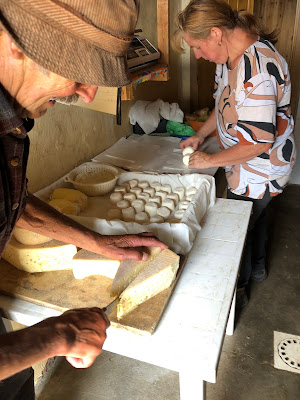

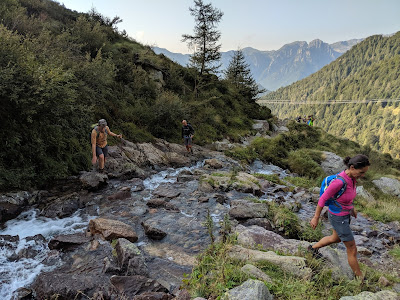



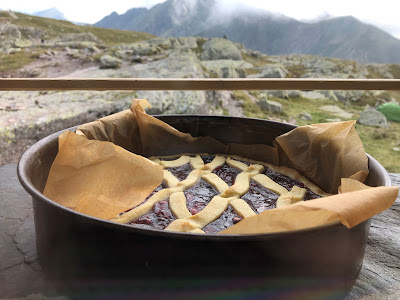





![[Apiaceae] Astrantia minor – Minor Masterwort [Apiaceae] Astrantia minor – Minor Masterwort](https://blogger.googleusercontent.com/img/b/R29vZ2xl/AVvXsEhXa_pAW0D1bPsdFPhexmjBOlslhyphenhyphenHpGIrGMNm3yinzvwah3HHPHA0no9kaFc96n81z0ydYmSE_HBmfH3oU0bcVO_GnTJTXE6dI9I2l5QoyTBnshknbpVGfazduElUIwHu6mDuc53Fx-ec/s400/%255BApiaceae%255D+Astrantia+minor.jpg)
![[Asteraceae] Anthemis sp. [Asteraceae] Anthemis sp.](https://blogger.googleusercontent.com/img/b/R29vZ2xl/AVvXsEgYlMyFctmMri8HyRe2ujyn_6KZ8QC24tEcTb8GyVnfbx1wMHwSVH4vs3VBCpjZKJMVsBnjNviTcP4aMUhiPIvowV5M5OMMy-_Oj46_XhK9dR8prPu8SQasnymS0EQqTr9ZmOjgpaht9co/s400/%255BAsteraceae%255D+Anthemis+sp.jpg)
![[Asteraceae] Solidago sp. [Asteraceae] Solidago sp.](https://blogger.googleusercontent.com/img/b/R29vZ2xl/AVvXsEgdUiEYYCOdgGGWAvLjqCJZbuFXIlKvlkpFVryoyavE6N6MWC2NUuNolsIovLtTYxbdCUxQ-dFuSWjvO5pltq9QTJXxNMZBcns2XMRUfHOtHva0Rj7HdeIZjt-e7jsy-DvtcC62xE7b_xA/s400/%255BAsteraceae%255D+Solidago.jpg)
![[Celastraceae] Parnassia palustris - Marsh Grass of Parnassus [Celastraceae] Parnassia palustris - Marsh Grass of Parnassus](https://blogger.googleusercontent.com/img/b/R29vZ2xl/AVvXsEizIb6Tjh8ViK-YZ8fynup2PERKic4t4BMcVud-bz0On64zIfg9PrB3RWJMrOudw-OYnWfdzehx4KQu4jW-zPoejIbJ-zW-LRW7S3jMk1PMWWuEowYFEtZCkaq9m_xgE4aZG4u1aAR4fZA/s400/%255BCelastraceae%255D+Parnassia+palustris.jpg)
![[Fabaceae] Trifolium alpinum – Mountain Clover [Fabaceae] Trifolium alpinum – Mountain Clover](https://blogger.googleusercontent.com/img/b/R29vZ2xl/AVvXsEiGj3rJWOB6x0UsYUe4ekgrfAhelvK_Yc3gFkmiED2Qpo26p-w3lrR_Z0l0Det1gB5ylHbXdoTG6gUoMjb-6wE1O1zqbBpYIg8gzWk0p1xOtAFXtMVmBr5b6QamXAJd-Ob8Q4hLWDdeiv4/s400/%255BFabaceae%255D+Trifolium+alpinum.jpg)
![[Gentianaceae] Gentianella sp. [Gentianaceae] Gentianella sp.](https://blogger.googleusercontent.com/img/b/R29vZ2xl/AVvXsEj1NzmvZvAozqrHg_uz2HTuEW21e0nLqNipFDHOL_LF5vz-9lqmwg6uB5XbkNDjlqMbPKfM-rocibZAbAIaZaxQv-KMhLzSgH6CTK6f2CKnGDG9fwtJi4MM8KgfZJp0F1kPvr0_V8cRw88/s400/%255BGentianaceae%255D+Gentianella+sp+%25281%2529.jpg)
![[Gentianaceae] Gentianella sp. [Gentianaceae] Gentianella sp.](https://blogger.googleusercontent.com/img/b/R29vZ2xl/AVvXsEjiKRFRkuelxAYr5-NkTBqxK87LNq2D8QTFlgJ9r8jvWR-teBu_zl78AoVOzTkhWa-ENZyq1GLegUHm6b-Nq9NY4KbBvhV1ZeSLLWpk9juJgM4TI6EVSJejWEmidHIpkFvxtvb3rSOgKJc/s400/%255BGentianaceae%255D+Gentianella+sp+%25282%2529.jpg)
![[Gentianaceae] Gentianella sp. [Gentianaceae] Gentianella sp.](https://blogger.googleusercontent.com/img/b/R29vZ2xl/AVvXsEjNLHEvbdgp3y7pAGGpSj0tqqxFWoWEivpcjvAkXWDoIjtua59I0KiI-2iGo7zK066QtISV26Vb6Y5Uf_PoonE75FyAxiOKtqDjpBa_xf7S-KZ6LflWTPd5_YvkLYNagBfpxIPJ624pFvs/s400/%255BGentianaceae%255D+Gentianella+sp+%25284%2529.jpg)
![[Gentianaceae] Gentiana asclepiadea - Willow Gentian [Gentianaceae] Gentiana asclepiadea - Willow Gentian](https://blogger.googleusercontent.com/img/b/R29vZ2xl/AVvXsEi_NMEVqpX1x_nQcrcaaCSgHFVS0JHognXyCdctQdVoD28zCI0xTOXx_So-qyjRcJdPUa-ExcOG5JwJIbm9eqPzaXdVJcQD82SlEfuKwhwk2g6ufABJzAvylClZFtsN_UtTD1RxKemHZ0w/s400/%255BGentianaceae%255D+Gentiana+asclepiadea.jpg)
![[Gentianaceae] Gentiana asclepiadea - Willow Gentian [Gentianaceae] Gentiana asclepiadea - Willow Gentian](https://blogger.googleusercontent.com/img/b/R29vZ2xl/AVvXsEhiRUVa3C8Kj2h58g6vT0L2KCNFg5q_9c7UPDa9wlMQJ8xpN39HbVU4tClvmLTTy3aMcvpUXxqHfUWqr2eGePqwaHHhv1dSwynA8dX4LbwrKk-mnLfI0DlWf0bs_rfbewIRet9UN98j6s4/s400/%255BLamiaceae%255D+Prunella+vulgaris.jpg)
![[Orobanchaceae] Euphrasia sp. – Alpine Eyebright [Orobanchaceae] Euphrasia sp. – Alpine Eyebright](https://blogger.googleusercontent.com/img/b/R29vZ2xl/AVvXsEg_pn1yKEqEouTdUW9AMJ6ItBq2QPs62zKm7TuMDnPzyhovso6m-w-ylNZ9hfGELNv1Pp4iAKZokmtclGJpyae-HwKFTXE4ZpZ_3rSusn7LNWtqymz1tka-hPobaOS2pN22h4g-Hx9eyPM/s400/%255BOrobanchaceae%255D+Veronica+sp+%25281%2529.jpg)
![[Orobanchaceae] Euphrasia sp. – Alpine Eyebright [Orobanchaceae] Euphrasia sp. – Alpine Eyebright](https://blogger.googleusercontent.com/img/b/R29vZ2xl/AVvXsEgXFehEvi5cji6Kf4ZQKUIdRXgvk-AlshAH0ujt0zYQRx6ZrtDWQ1I2KgCPYRsqBq-YTQodQ5RPyQy10aRaomklN_ie4-Q4rZCYagOP3MyyypNK_J986GfbzRV_H-zJULyVFhzXjKC4tZw/s400/%255BOrobanchaceae%255D+Veronica+sp+%25282%2529.jpg)
![[Papaveraceae] Pseudofumaria lutea – Yellow Corydalis [Papaveraceae] Pseudofumaria lutea – Yellow Corydalis](https://blogger.googleusercontent.com/img/b/R29vZ2xl/AVvXsEg0Sh9q1CqLJPhMJKhC-KEKKjUE10qzNby52Tgyt_bHH2jTK7nIfn2VVxMjJiBvxQYzuzAhDc5GZLELe-qjl0ZixVK0D1BnYwOWtrOTdhujrf878Xy9wl54qQ4R5GM3yz8fY-DJjYzvZbw/s400/%255BPapaveraceae%255D+Pseudofumaria+lutea.jpg)
![[Ranuculaceae] Aconitum napellus – Monk’s-Hood [Ranuculaceae] Aconitum napellus – Monk’s-Hood](https://blogger.googleusercontent.com/img/b/R29vZ2xl/AVvXsEgacIQzz8Ksor3q354fo7tdyqmdroDAxTe3z6_Wj9Ih-41FyGUXytX5TNplsDfSiUc94ik3oBD-ovU0YL4GK_9NeCS7wpA0h8RZOeMf8tS2HwYWP5uHHSoLadbzVPE_wkISqhYOq9Ssl_s/s400/%255BRanuculaceae%255D+Aconitum+napellus+%25281%2529.jpg)
![[Ranuculaceae] Aconitum napellus – Monk’s-Hood [Ranuculaceae] Aconitum napellus – Monk’s-Hood](https://blogger.googleusercontent.com/img/b/R29vZ2xl/AVvXsEhXmNCtD2JjCaFABfuZN-Z2WTMMnhGiVr9rwx1H1u5kZYR23TTKH-A4N6gHcYN-jgkCD-9mna4e07RvHZNrKjQm-LMfto-U4GLcgZI_m8C1i5eqHD4TzCnzeylbpvV-TMVLQKaxJne_QM8/s400/%255BRanuculaceae%255D+Aconitum+napellus+%25282%2529.jpg)
![[Ranuculaceae] Aconitum napellus – Monk’s-Hood [Ranuculaceae] Aconitum napellus – Monk’s-Hood](https://blogger.googleusercontent.com/img/b/R29vZ2xl/AVvXsEheECwkTtAK34uhHWyNKiOs_UG4ECaLqnocPyF29kLu7HgzgrQ-rdpEeaVC2ZXMSBjeA4If4qTlKekUdX2KrdLuh-Kw-Tzqf_VwyE0AoUl58coOGuZEtJVv9_RQVgJ0fbMU-yewnk-qGO0/s400/%255BRanuculaceae%255D+Aconitum+napellus+%25283%2529.jpg)






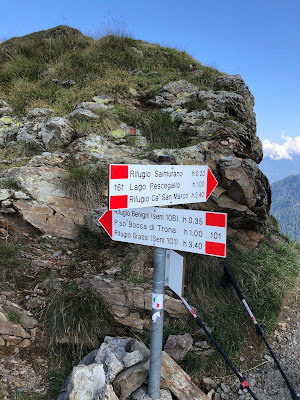





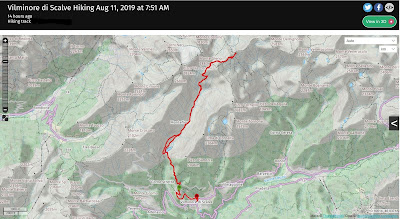




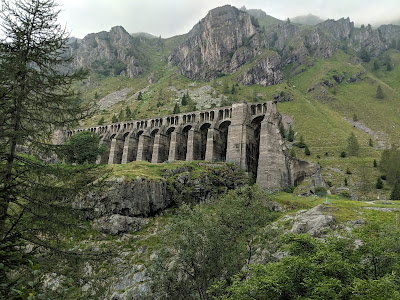
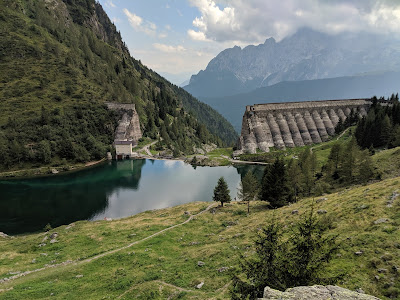



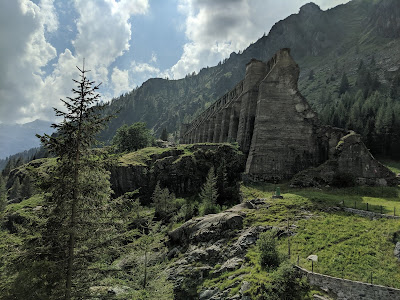
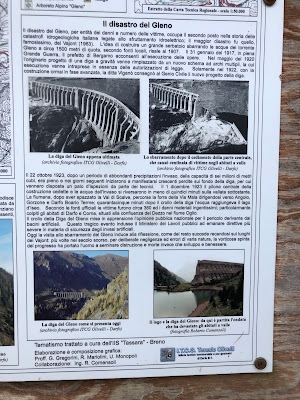
![[Amaryllidaceae] Allium schoenoprasum – Wild Chives (Erba cipollina) [Amaryllidaceae] Allium schoenoprasum – Wild Chives (Erba cipollina)](https://blogger.googleusercontent.com/img/b/R29vZ2xl/AVvXsEhnmZchCBlK110l088fvE9TZBQC5G4uUNaSMcePdy691jzMIuZYx8-DkseZNN6tZlhCwboFa6Vu1_xHbbJ9PDqKfJNAuIVZVkkUI0IHDY-6OrDOcEKX376hPh3yfH6BbMW3KtswELMnFs8/s400/%255BAmaryllidaceae%255D+Allium+schoenoprasum+%25282%2529.jpg)
![[Amaryllidaceae] Allium schoenoprasum – Wild Chives (Erba cipollina) [Amaryllidaceae] Allium schoenoprasum – Wild Chives (Erba cipollina)](https://blogger.googleusercontent.com/img/b/R29vZ2xl/AVvXsEhNBVrlVa05Rj8oT6hsmeKzG1cMiC-1j0dLsZx781brrMcFuutjo4Pa_pW9zleh3jTDvroZJFYx1YYTXx55ZiCep6-kl3c7c8n3ai2YzjqlamCQFcCLLu361l3tgrFwH44qqzVB6JlqDZ0/s400/%255BAmaryllidaceae%255D+Allium+schoenoprasum.jpg)
![[Apiaceae] Bupleurum petraeum – Rock Hare’s Ear (Bupleuro delle rocce) [Apiaceae] Bupleurum petraeum – Rock Hare’s Ear (Bupleuro delle rocce)](https://blogger.googleusercontent.com/img/b/R29vZ2xl/AVvXsEiJnfAI66makFglYRwLYGe0U9WSpWTdK-bPhgTJ8gmGM73F3AHF0Pz1j13Pc0a_6nh5dtFgK2Y1d_BVtD9P-Kb9B47Gn8Ol9KYlxUJ26IDXdhai44GfI9agOR9a6RVO20bibxGXvui_3bA/s400/%255BApiaceae%255D+Bupleurum+petraeum+%25282%2529.jpg)
![[Apiaceae] Bupleurum petraeum – Rock Hare’s Ear (Bupleuro delle rocce) [Apiaceae] Bupleurum petraeum – Rock Hare’s Ear (Bupleuro delle rocce)](https://blogger.googleusercontent.com/img/b/R29vZ2xl/AVvXsEi_dSMjcaehejsbJsvr7hq27qWFvKV39SYU58UPKboOtshEizJBWIv52NPnKShLljSkeIPqj7eKmHrTx_wIeFkXJsYKcz7IBMyXpK9pEzyY9VbfJaUsEZmF5Iqct8vfn-aDiSYC0MHzmHE/s400/%255BApiaceae%255D+Bupleurum+petraeum.jpg)
![[Asteraceae] Carlina sp. [Asteraceae] Carlina sp.](https://blogger.googleusercontent.com/img/b/R29vZ2xl/AVvXsEiofOuiU_Vgs4J4JbXyWRRxyKsS7M_ZffWO3h1A38wgh0YEXICEzkIxSwNj21sykkwn318q9l4XprvDN-azELEyys44CNzNaqA6vdoXfLdj0vzzor9dB4WOMesS9srWu-Q8ImaXCa2mIs8/s400/%255BAsteraceae%255D+Carlina.jpg)
![[Asteraceae] Centaurea uniflora - Plume Knapweed (Fiordaliso alpino con un capolino) [Asteraceae] Centaurea uniflora - Plume Knapweed (Fiordaliso alpino con un capolino)](https://blogger.googleusercontent.com/img/b/R29vZ2xl/AVvXsEgAEWfz9CLR9w4p6FEWyWvrRWCYOs0QEA-6tpLRKlKpN_E-z-s2T-Ga2ctaEUpbBBqrRWviqAV1FRaKtzeKLrehOA8Pdd8zDxC6tUkqJZlB-DvZgJKH-gfxn0AK2Oefi-bzjK84pDR13hg/s400/%255BAsteraceae%255D+Centaurea+uniflora.jpg)
![[Asteraceae] Cirsium erisithales – Yellow Thistle (Cardo zampa d'orso) [Asteraceae] Cirsium erisithales – Yellow Thistle (Cardo zampa d'orso)](https://blogger.googleusercontent.com/img/b/R29vZ2xl/AVvXsEijdg-A8MZZ9xxwq37xvKj88MzqaYw1d-z5eOTsEYMh5IuiF7dJZCeL1pEbmz88gf4RHMJzWtubgxQ-k90__NrtkFhor8YNfpo8BxuYN_DWdB_c_BEE5ra5onAedXDHH6SmkWdlm1pi0uo/s400/%255BAsteraceae%255D+Cirsium+erisithales.jpg)
![[Asteraceae] Cirsium spinosissimum - Spiniest Thistle (Cardo spinosissimo) [Asteraceae] Cirsium spinosissimum - Spiniest Thistle (Cardo spinosissimo)](https://blogger.googleusercontent.com/img/b/R29vZ2xl/AVvXsEhcNojY-dLR1m8lqN15aVZWDbT-yf2J48XogDaWZDH-0HJTLd3x7hL9AAc4rVvB1LubidlJkqLWZfZjlvjU8PRMWLsIY2rXdrL6KwrnVPDVqFNxYcjjTsl9Bj7-TlVW7FBAQyGTbVqDP_U/s400/%255BAsteraceae%255D+Cirsium+spinosissimum.jpg)
![[Asteraceae] Crespis aurea – Golden Hawk's Beard (Radicchiella aranciata) [Asteraceae] Crespis aurea – Golden Hawk's Beard (Radicchiella aranciata)](https://blogger.googleusercontent.com/img/b/R29vZ2xl/AVvXsEjYITScofvh1B_xqKo11aFQJRl09u-_mJbEd69opmRdJ7Wm9glNpRJMw06L4tPyNPnWUx-xh8UaaacpDx0KV4Ex22eqjsldzJsd9h3rM4cTM_wJR7SJDwadQ13nDG5c59LhDJOyg3IMy10/s400/%255BAsteraceae%255D+Crespis+aurea.jpg)
![[Asteraceae] Leontopodium sp. – Edelweiss (Stella alpina) [Asteraceae] Leontopodium sp. – Edelweiss (Stella alpina)](https://blogger.googleusercontent.com/img/b/R29vZ2xl/AVvXsEjGOIVmG6jqT6HvpmA2nWv2sCm0JyeHdjorYSVddmeTCbLfupfwCW_-Bi0MvR0G_xLctggdwqZJ9t1DGbQErQ28LUeAmYpyciKLVRKBJn4yz_6DsGubhklbQZinh5OuKHAiWdzxckR4I2c/s400/%255BAsteraceae%255D+Leontopodium.jpg)
![[Boraginaceae] Eritrichum nanum – Arctic Alpine Forget-me-Not (Eritrichio nano) [Boraginaceae] Eritrichum nanum – Arctic Alpine Forget-me-Not (Eritrichio nano)](https://blogger.googleusercontent.com/img/b/R29vZ2xl/AVvXsEh8p9gEB5kI8VXA9jlLiSk8NrqqmryZsmC2gat_ey9lIjakwZmWC0CuCX_tHZSOiVPNdybZhoeW_bkWbR3ibRqr8JU9P6T9QTH80Zk6VsaGUrdVi2WYQF737ygoAVJFNvEjuOV791qUtQA/s400/%255BBoraginaceae%255D+Eritrichum+nanum+2.jpg)
![[Boraginaceae] Eritrichum nanum – Arctic Alpine Forget-me-Not (Eritrichio nano) [Boraginaceae] Eritrichum nanum – Arctic Alpine Forget-me-Not (Eritrichio nano)](https://blogger.googleusercontent.com/img/b/R29vZ2xl/AVvXsEiMplRDhpLLW00p2C7iGxLrf306qTKaexPLBCoBOJtGThlhtlM-d0SByHJYqmYqERivNjs4Yy3HiArX5r_Awj9Z8zPJIcJZWHngMNVfq4jm-ob02jmZ5UjEKkweiWPh3eQU1D8zXUtrsXA/s400/%255BBoraginaceae%255D+Eritrichum+nanum.jpg)
![[Brassicaceae] Noccaea rotundifolium – Round Leaved Penny Cress (Erba storna a foglie rotunda) [Brassicaceae] Noccaea rotundifolium – Round Leaved Penny Cress (Erba storna a foglie rotunda)](https://blogger.googleusercontent.com/img/b/R29vZ2xl/AVvXsEgzT5TcVNdQbt9jZ9R2tsontLSsvIm2vpLQpAQWiMcOWvbShN_OpUYZBkhHNh_tNwnujtlsuSqdx2l5ZbBtw4_XwEz958AKaMSycNJXfPIHfy2rL8ihfUmcIVbEnPe60K7GWISJGA0K6Ws/s400/%255BBrassicaceae%255D+Noccaea+rotundifolium.jpg)
![[Caryophyllaceae] Cerastium arvense – Filed Chickweed (Peverina dei campi) [Caryophyllaceae] Cerastium arvense – Filed Chickweed (Peverina dei campi)](https://blogger.googleusercontent.com/img/b/R29vZ2xl/AVvXsEi8ciMKUmhf_qtIKUEvE1Kp0YdFBE4DoGLvH2QKIjX5mRJaJe-f-Sr3wCyk0TF-F851e7FlGbD-NQxxoDDlqw0FbBrEcnm18hyKVfyGMeldr0GRxV5xCppqxlL9K2589MNAkQftA3c-iD0/s400/%255BCaryophyllaceae%255D+Cerastium+arvense+2.jpg)
![[Caryophyllaceae] Cerastium arvense – Filed Chickweed (Peverina dei campi) [Caryophyllaceae] Cerastium arvense – Filed Chickweed (Peverina dei campi)](https://blogger.googleusercontent.com/img/b/R29vZ2xl/AVvXsEg_luPnLIBiNcGKUNMMS-TJvmJ4Xfl9ac4lBRgH7TGN6sPkIa_nsT3Ue5tOftpqMlNHVkDMvfKIKA9gdHuhCF1-NloXfTM7tDHovtXcyfxBow8RzQh50HNCdgwdq7mxLK-WuDUdUVeGyvY/s400/%255BCaryophyllaceae%255D+Cerastium+arvense.jpg)
![[Caryophyllaceae] Dianthus sp. [Caryophyllaceae] Dianthus sp.](https://blogger.googleusercontent.com/img/b/R29vZ2xl/AVvXsEg133FMN3hUenz0FMwIstotL_CLcYpMwSC_VAQmw4QPqsp1rRfTZdK2Qoa77uBCzx0l3hHoDhZDFo8YqLN06ZD-5cn72n_hrgzELu81o7CeKihngEdd-W_Xd4WDNVjbRQ3JFgSa392E1Gw/s400/%255BCaryophyllaceae%255D+Dianthus+sp..jpg)
![[Caryophyllaceae] Dianthus superbus – Fringed Pink (Garofano superbo) [Caryophyllaceae] Dianthus superbus – Fringed Pink (Garofano superbo)](https://blogger.googleusercontent.com/img/b/R29vZ2xl/AVvXsEhK9ZY84trkaquZwuDIE9mpaj4BD053fRsdZUYIrR1Mr3ktG92oaAkboKo4qrY8PG_XUVI5sigCBuU5JsZ7tl3LZtKyJeQ4tapjBKOfpFcm3ySNI91qkm5J9KISzzyO0RWDT1BD_Wh22_U/s400/%255BCaryophyllaceae%255D+Dianthus+superbus.jpg)
![[Caryophyllaceae] Saponaria officinalis – Bouncingbet, Common Soapwort (Saponaria comune) [Caryophyllaceae] Saponaria officinalis – Bouncingbet, Common Soapwort (Saponaria comune)](https://blogger.googleusercontent.com/img/b/R29vZ2xl/AVvXsEiu2gUtw2PLA84TW1e9Somj6FimoN6qiDXpadtG3PrJdYwQuaLCQ_xSO-Gwx130WOh3xZrtapOoUO9bf8zZ8e5eeEkbg60QcsCzr3FrMlR6bVd58ueM-ann3UyEP7UJ81CNVGnppgdh6L0/s400/%255BCaryophyllaceae%255D+Saponaria+officinalis.jpg)
![[Celastraceae] Parnassia palustris - Marsh Grass of Parnassus (Parnassia delle paludi) [Celastraceae] Parnassia palustris - Marsh Grass of Parnassus (Parnassia delle paludi)](https://blogger.googleusercontent.com/img/b/R29vZ2xl/AVvXsEhWitAYox6L660IoqzZSrS5AlWI7ekSatukmNew5aR_RZUfr1otlDEEIyns-rVbMqsuEOTsGRoaXtkQg70V0-VcazrLUHhLRDzRV1L5N-Ako4pMmXtiivmtCu2jFQXsM4PyTEJveKrRQO4/s400/%255BCelastraceae%255D+Parnassia+palustris.jpg)
![[Crassulaceae] Rhodiola rosea – Roseroot Stonecrop (Rodiola rosea) [Crassulaceae] Rhodiola rosea – Roseroot Stonecrop (Rodiola rosea)](https://blogger.googleusercontent.com/img/b/R29vZ2xl/AVvXsEgXFMVtt1YT6ugvgiDWzps0mEZJcouAOjaJAj5-OHkkRee69RUNJj6guFPFfzsxiSzycvRYjAL3Avi7eb2ec7G-TdrNYamy9s-LXtu2vBtGfEavgqY4X5Orh3v5ABXDseqJQv_OnBqQB3I/s400/%255BCrassulaceae%255D+Rhodiola+rosea+2.jpg)
![[Crassulaceae] Rhodiola rosea – Roseroot Stonecrop (Rodiola rosea) [Crassulaceae] Rhodiola rosea – Roseroot Stonecrop (Rodiola rosea)](https://blogger.googleusercontent.com/img/b/R29vZ2xl/AVvXsEhxrHd-H9Ie_z-CsKKTgkFIZLIi4KGyAXsu0-T7v4ptv5mooaLA_SZYjZ3_GLFavj8t9PjRgzrSQg2JJu3a-Zq7-4-Ohn9nvEvPyXmCha0wML4q8bHr7FNVtxZkyN9tsPF0qkO-ByBd6KY/s400/%255BCrassulaceae%255D+Rhodiola+rosea.jpg)
![[Crassulaceae] Sempervivium sp. – Mountain Houseleek (Semprevivo), possibly S. montanum [Crassulaceae] Sempervivium sp. – Mountain Houseleek (Semprevivo), possibly S. montanum](https://blogger.googleusercontent.com/img/b/R29vZ2xl/AVvXsEhOSZxoEeacA0y4Tdw38QF3CKUvGikGUmJUzDZmpSYfkqv-01a77bz_clHWVYzU4ktrYOXOE27IqzbfH1NuEJXyoEIwCI-8tPXIXIjaGO2Hnbk1taqSCdX30ltY6CQCCEibSTeC15k5kOE/s400/%255BCrassulaceae%255D+Sempervivium+sp.jpg)
![[Gentianaceae] Gentian sp. – Gentian (Genziana) [Gentianaceae] Gentian sp. – Gentian (Genziana)](https://blogger.googleusercontent.com/img/b/R29vZ2xl/AVvXsEhptI7wPPpM0KWhmTz92e8iexJ2BALDJyxRw7VP0KT6frAqdGoBaLs7NMjgHAXYOcT_tAfzDoITCtWmAepBMCXMmYFnf67nETkcWCNSM5DAxrWsLn6BdUW3TFLdyxfqlIb4uABGA35-dKw/s400/%255BGentianaceae%255D+Gentian+sp.jpg)
![[Orobanchaceae] Pedicularis sp. – Lousewort (Pediculare) – possibly P. kerneri. [Orobanchaceae] Pedicularis sp. – Lousewort (Pediculare) – possibly P. kerneri.](https://blogger.googleusercontent.com/img/b/R29vZ2xl/AVvXsEhgWw18GB2reYz70NOQnOjyJ2MRhEAB7y-QdwvtcZtz0eAyWGdqpWrMz0fT_23F4rvlZ-ViJ3B1hiG5VO2DFEczbX0_2YuxK_aMHWpovbfIN91_rEDr_nEa-lxJYc9EcIUZKlXv2FQmxqg/s400/%255BOrobanchaceae%255D+Pedicularis+sp.jpg)
![[Orobanchaceae] Rhinanthus sp. - Yellow Rattle (Cresta di gallo) [Orobanchaceae] Rhinanthus sp. - Yellow Rattle (Cresta di gallo)](https://blogger.googleusercontent.com/img/b/R29vZ2xl/AVvXsEgPPVxhZJoSsa5dOS5UyeKvPEPrRIC5uOkTbaUFPZqtL1ThpoCuVQJUsTluyMEWu6j7XeVAQCFJF74rFmxymwaY6wBOzil9Ivv0sTQKCk6F1suNH026q6XbexkK7sW3S4r4QpolfsgOZEY/s400/%255BOrobanchaceae%255D+Rhinanthus+sp.jpg)
![[Plantaginaceae] Veronica sp. – Alpine Eyebright (Eufrasia delle alpi) [Plantaginaceae] Veronica sp. – Alpine Eyebright (Eufrasia delle alpi)](https://blogger.googleusercontent.com/img/b/R29vZ2xl/AVvXsEiqTlKtkGgxOQpuKEQpsiUHE7dcmnr9erH-Yb_d2EAQ6IY8JgwHumtCUyJJiAnWjg4ldvTN9yRN87R2HpzFCwuwNMowOWQ3Aaw8Zyr-t5DgXWee0g-ps-5zM-ukxXvSzfH5f37nLCjsUd4/s400/%255BOrobanchaceae%255D+Veronica+sp.jpg)
![[Papaveraceae] Pseudofumaria lutea – Yellow Corydalis (Colombina gialla) [Papaveraceae] Pseudofumaria lutea – Yellow Corydalis (Colombina gialla)](https://blogger.googleusercontent.com/img/b/R29vZ2xl/AVvXsEggT__DVdZFoZM42cCtykGFnNoF2nG32ZKyjlfkXnsk053KzcOVBIoFXoGpO5uo_zpsK3z3XZkYU5bMoLsbqbGKjONQSBqNjw1LIj5IOydVQ9GGtCjakWy4KFJau3O3F-JOa25sAutFLUM/s400/%255BPapaveraceae%255D+Pseudofumaria+lutea.jpg)
![[Plantaginaceae] Linaria alpina – Alpine Toadflax (Linajola alpina) [Plantaginaceae] Linaria alpina – Alpine Toadflax (Linajola alpina)](https://blogger.googleusercontent.com/img/b/R29vZ2xl/AVvXsEhjwQ5qUk_XVP1lhqKOdFenYZ-EcRzF9xfKMs3Ox0EXclrQSD3mU3EAz2R3Vb5xeo1U-8KQW0jNgC-KMZwukAiX0lYFpWoDps2VaP40GSr5GqErbhkSI7v4mTXV4Lpin2X-KoUmZLeqyY8/s400/%255BPlantaginaceae%255D+Linaria+alpina+2.jpg)
![[Plantaginaceae] Linaria alpina – Alpine Toadflax (Linajola alpina) [Plantaginaceae] Linaria alpina – Alpine Toadflax (Linajola alpina)](https://blogger.googleusercontent.com/img/b/R29vZ2xl/AVvXsEh84iMqO8M8EkVIPb36AtT5wBxxbhAsWw4NohS8-6AtRLjy_1014ARpqyCp9NgursNPHuNKujlZRyxDhH6QCPoqxT-M0STEjgKXYWGoImCMxgLMMSQ5_oyio4Kd7A88PtmzfH3r7uwDSKo/s400/%255BPlantaginaceae%255D+Linaria+alpina.jpg)
![[Plumbaginaceae] Armeria alpina – Alpine Thrift (Spillone alpino) [Plumbaginaceae] Armeria alpina – Alpine Thrift (Spillone alpino)](https://blogger.googleusercontent.com/img/b/R29vZ2xl/AVvXsEi7JfLT476fehjra3YobiuGepUkKILA8tcgmg7Ojf4AUjI-ZmMg0eJ4MgRiVDOjah7bF0GsDbPj5Geceg4DYhZ-VSYs9UtMVaQQvxTOA6UhBuL3FY7dZrhd6RUod_hzi8ouJ9qfT_49X_g/s400/%255BPlumbaginaceae%255D+Aermeria+alpina+2.jpg)
![[Plumbaginaceae] Armeria alpina – Alpine Thrift (Spillone alpino) [Plumbaginaceae] Armeria alpina – Alpine Thrift (Spillone alpino)](https://blogger.googleusercontent.com/img/b/R29vZ2xl/AVvXsEinhokznptSfJTIvZuLwhgyNnUoWpzO4PUEYUss70urJBybvmp534krMSlXn9q7R4VXZQw3b6NGeTCA7wnriv1kJ0OR2RwHUHAJ6NTXUJnudDYv-Ox3Solq2lZDKnhO-tQFfGnrEll4Zng/s400/%255BPlumbaginaceae%255D+Aermeria+alpina+3.jpg)
![[Plumbaginaceae] Armeria alpina – Alpine Thrift (Spillone alpino) [Plumbaginaceae] Armeria alpina – Alpine Thrift (Spillone alpino)](https://blogger.googleusercontent.com/img/b/R29vZ2xl/AVvXsEjprBf7QQrYJyywx8D9b0j5lBHrK5GdajOrEUx7Zs7Q5Ul0Qx0_OBgDblO4yaZH8ec0k2sgMREaltnd3MszjXViM009xmDKFD6Q1QMuzKdZqrtfr432L125GSWsh9CfBMF7sKMJeiPfk9Y/s400/%255BPlumbaginaceae%255D+Aermeria+alpina.jpg)
![[Rosaceae] Potentilla nitida – Pink cinquefoil (Cinquefoglia delle Dolomiti) [Rosaceae] Potentilla nitida – Pink cinquefoil (Cinquefoglia delle Dolomiti)](https://blogger.googleusercontent.com/img/b/R29vZ2xl/AVvXsEgHQqrYw9Y0OFXRwNDTE-EJ32C9z-YKE7j4C4yf3bCtJSLQEvetoM8hG5tGhHZ72E03qjMVWPIV_ZILL5rkWVM-3Xtcvm3J-2afqp8iXNhljGaKvf_DofPYeqi9JmPydwm7ALVuTZeFfXY/s400/%255BRosaceae%255D+Potentilla+nitida.jpg)
![[Rosaceae] Sanguisorba dodecandra – Italian Burnet (Salvastrella con dodici stami) [Rosaceae] Sanguisorba dodecandra – Italian Burnet (Salvastrella con dodici stami)](https://blogger.googleusercontent.com/img/b/R29vZ2xl/AVvXsEh9pKR5m7rNGhCct4mP0_w4ZPmhDdEMGnCTqCF5lA5NnICXNHE4l-UcD3oBR69FICrhKmG6uqXHo1gKOozzkXCLWpIs3ffkBBrtX5xLDgS0LR0fyGtva_iMZeRgVnDS4d8ue0mQoMjsDmA/s400/%255BRosaceae%255D+Sanguisorba+dodecandra.jpg)
![[Ranunculaceae] Pulsatilla alpina – Alpine Pasqueflower (Pulsatilla alpina) [Ranunculaceae] Pulsatilla alpina – Alpine Pasqueflower (Pulsatilla alpina)](https://blogger.googleusercontent.com/img/b/R29vZ2xl/AVvXsEhqkIdbRURT8VSyibvAGvDYvLgWdliqlX0rbYBOoc1nGkDEWqdaFl5SJjlBQenYQf3fBSkQdm2GdO5FowBQ3u-_zBe347CKz14tiVOaoUKM_KacNQ3I9-WHSO3OEIo2p01ALOz35m8xlZM/s400/%255BRanunculaceae%255D+Pulsatilla+alpina+2.jpg)
![[Ranunculaceae] Pulsatilla alpina – Alpine Pasqueflower (Pulsatilla alpina) [Ranunculaceae] Pulsatilla alpina – Alpine Pasqueflower (Pulsatilla alpina)](https://blogger.googleusercontent.com/img/b/R29vZ2xl/AVvXsEhSg0H1DpMDN8d-oFup6bHs77ElMWfaK4Tr5MDthakrMsRoSdZwv2Yrcg7y7zME9TVzqYVYyw9ihxJRLIe8uwuJZFf8d-nSxOECkWQI6_s0LUmXF8YsFs-KjpBg6XzGjN1UC9k4E-k0I3Y/s400/%255BRanunculaceae%255D+Pulsatilla+alpina.jpg)
![[Saxifragaceae] Saxifraga aizoides – Yellow Saxifrage (Sassifraga gialla) [Saxifragaceae] Saxifraga aizoides – Yellow Saxifrage (Sassifraga gialla)](https://blogger.googleusercontent.com/img/b/R29vZ2xl/AVvXsEijAWt6C0LOsX744jK28xrfhXdr3NNYFt_cHxQj7pV11OlOqfisOPWeWf1XDZWDW_SEUe91wGVQPfBzR7w64SdHg6NUk1xRCSdSdhVgb2goDmdkLPEpYRLZEVYnnmF71oqYV674OsZZ6Vo/s400/%255BSaxifragaceae%255D+Saxifraga+aizoides.jpg)
![[Saxifragaceae] Saxifraga byroides – Mossy Saxifrage (Sassifraga briode) [Saxifragaceae] Saxifraga byroides – Mossy Saxifrage (Sassifraga briode)](https://blogger.googleusercontent.com/img/b/R29vZ2xl/AVvXsEhVHm34SgQkiZRx8YpX9JEXXau3jRvpPI1beK1hRSsS1_aA7HscJ8AZwQl3h8s6jArKzJ0pzoWfb4-699Ursk_T5qc-2hX-YlnrQ8O-nYTF0vu4sBwBVtkpuYNFjSHPKES8d8aLhJRCpeA/s400/%255BSaxifragaceae%255D+Saxifraga+byrodes.jpg)
![[Saxifragaceae] Saxifraga byroides – Mossy Saxifrage (Sassifraga briode) [Saxifragaceae] Saxifraga byroides – Mossy Saxifrage (Sassifraga briode)](https://blogger.googleusercontent.com/img/b/R29vZ2xl/AVvXsEjcW4ikcm3lW_6qv82HdVGP2ReONB5G6nNJHAfHAGK8EShrAq_4K1uJYlvApss8tAnRvkut8-rQ37_RwGEA0trTeXigTxB9SWbws-P04slcg1nqCU1WRlqzkNU_YuuuN0Ie78Yzo_ALMls/s400/%255BSaxifragaceae%255D+Saxifraga+byroides+2.jpg)

